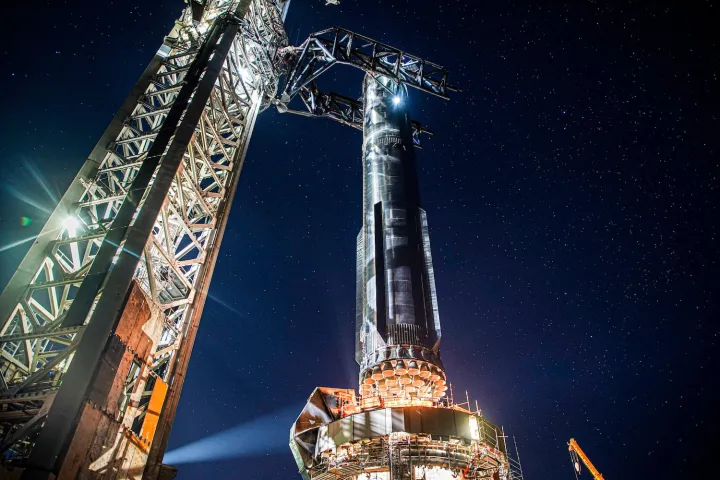
SpaceX has been given the green light to send its Super Heavy rocket and Starship spacecraft skyward in what will be only the second test launch of the world’s most powerful spaceflight system.
Permission to launch the Starship came from the Federal Aviation Administration (FAA) on Wednesday following the completion of a lengthy environmental review.
“The FAA has given license authorization for the second launch of the SpaceX Starship Super Heavy vehicle,” it said in a widely reported statement, adding: “The FAA determined SpaceX met all safety, environmental, policy, and financial responsibility requirements.”
SpaceX is aiming to launch the Super Heavy and Starship — collectively known as the Starship — from SpaceX’s Starbase facility in southern Texas early Friday morning, and the entire event will be live-streamed.
SpaceX conducted the first Starship test flight in April, but mission controllers were forced to destroy the rocket just minutes after launch following a malfunction that appeared to prevent the spacecraft from separating from the rocket.
Still, SpaceX considered the uncrewed test mission a partial success for simply getting the 400-foot-tall vehicle in the air, albeit only for a few minutes.
But it wasn’t only the rocket that SpaceX had to work on over the summer. Unable to withstand the extreme force of the Super Heavy’s 33 Raptor engines as it headed skyward, the launchpad completely disintegrated, sending concrete and other debris over a large area.
The damage prompted engineers to create what SpaceX chief Elon Musk described as a “mega-steel pancake,” which combines with the water deluge system to protect the launchpad from the immense heat and pressure from the rocket’s engines as the vehicle blasts off.
After completing a large number of “corrective actions” at the request of the FAA, SpaceX has now received permission to attempt the second flight of the Starship, and this time it will be hoping to see the spacecraft make it to orbit.
NASA is among those keen to witness a successful flight as it’s planning to use a modified version of the Starship spacecraft for the first crewed lunar landing in five decades in the Artemis III mission, which is currently scheduled for 2025.
Editors' Recommendations
- SpaceX facing FAA review of Starship launches from Kennedy
- Check out SpaceX’s new spacesuit for first private spacewalk
- SpaceX Falcon 9 booster equals flight record, but does not land this time
- SpaceX slow-motion video shows powerful Raptor rocket engine shutting down
- SpaceX all set for a record-breaking rocket launch on Friday


